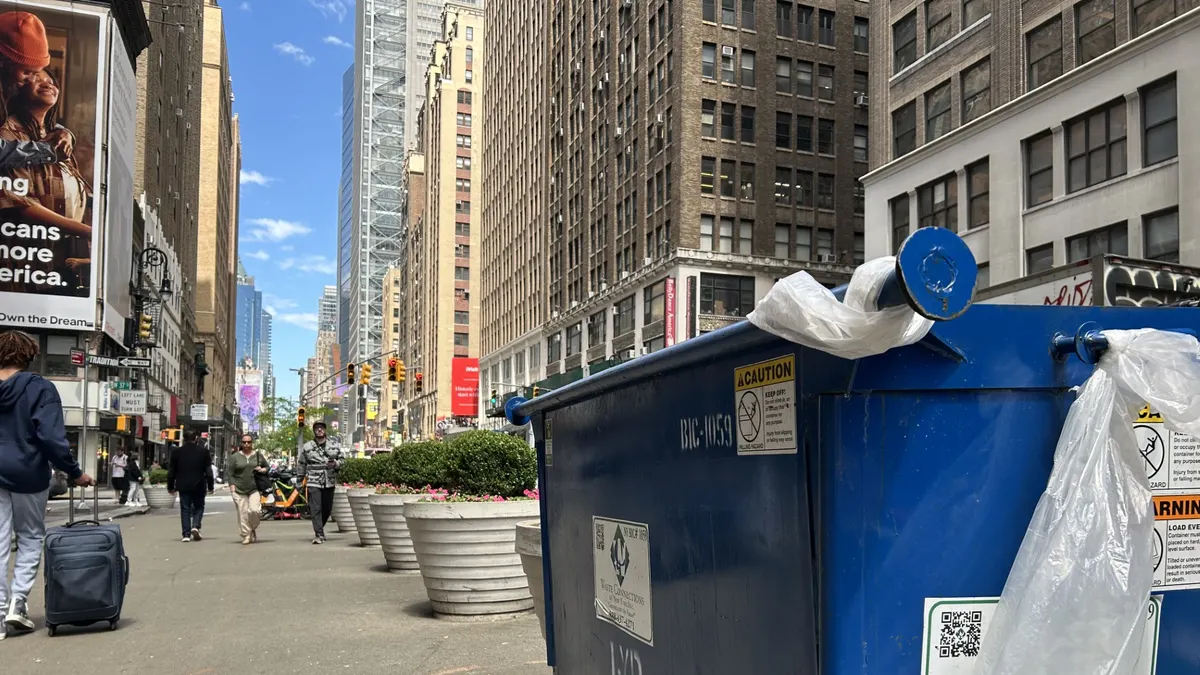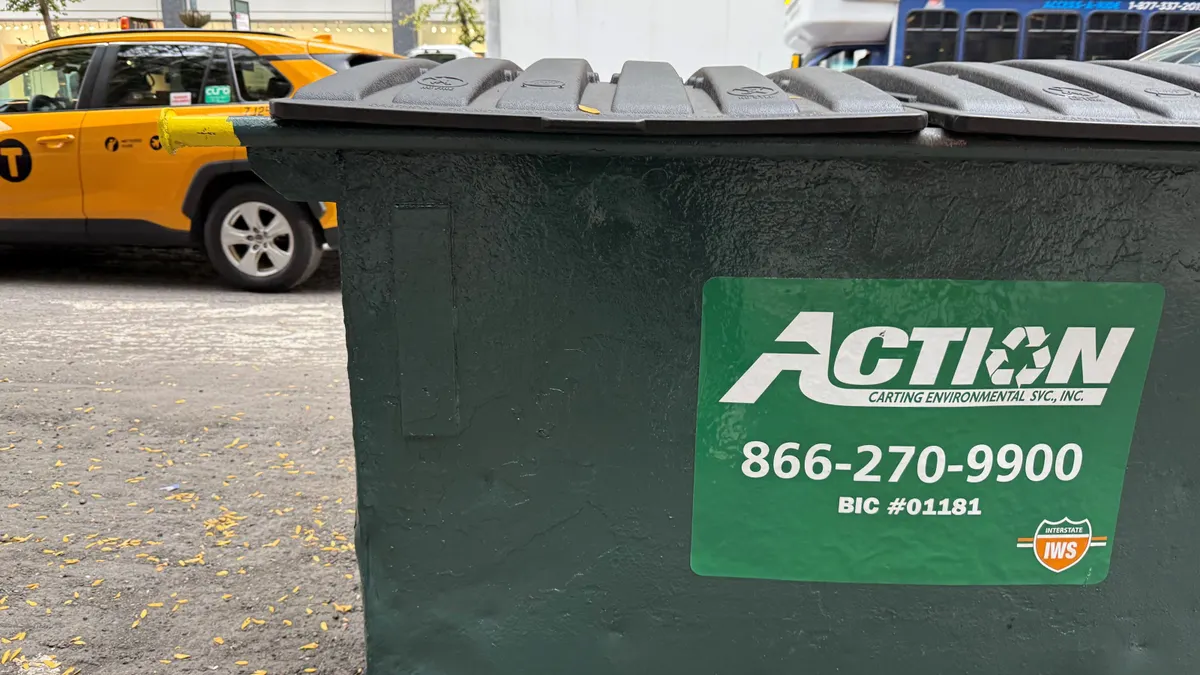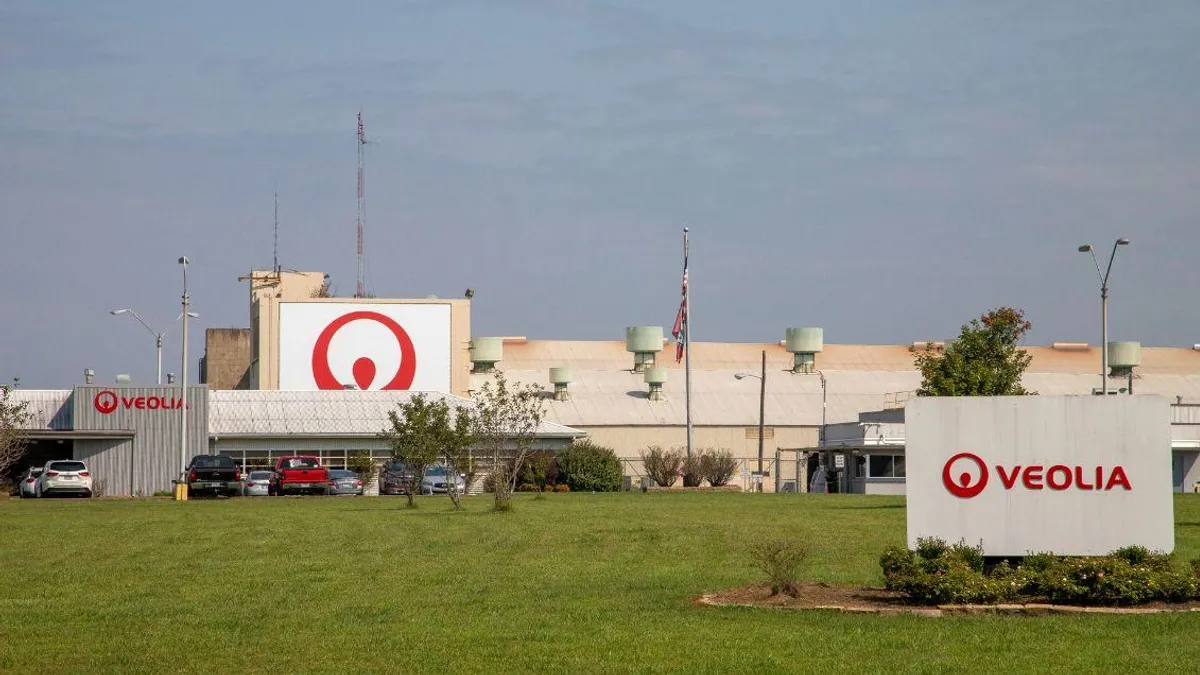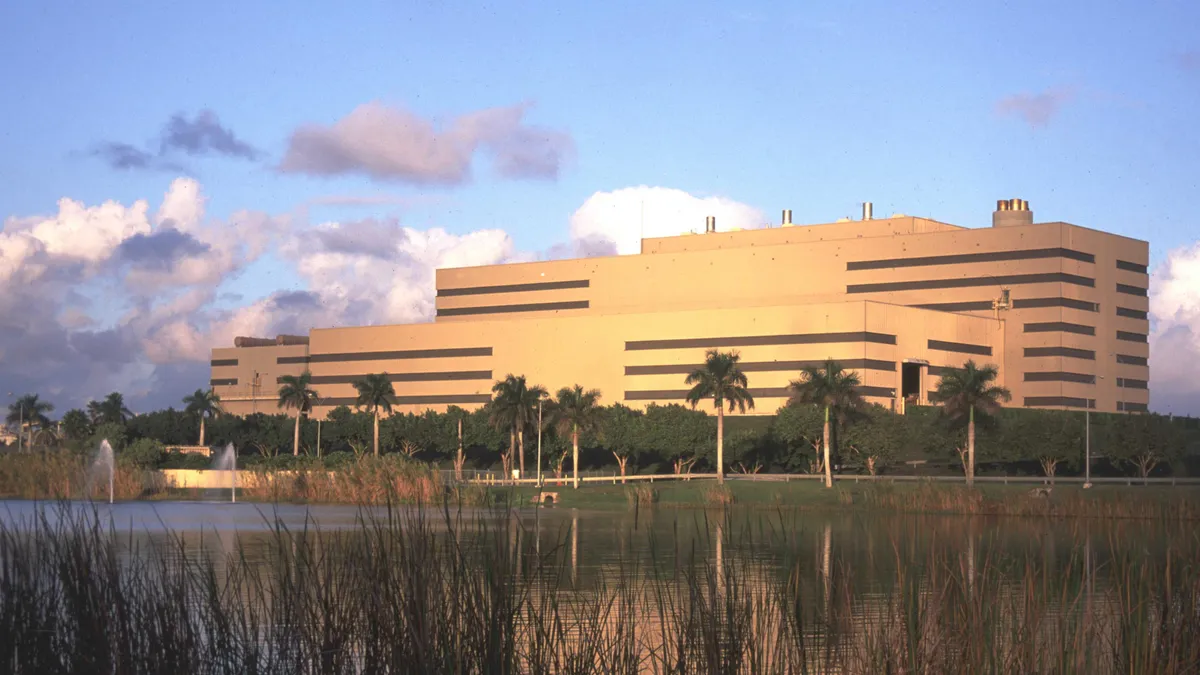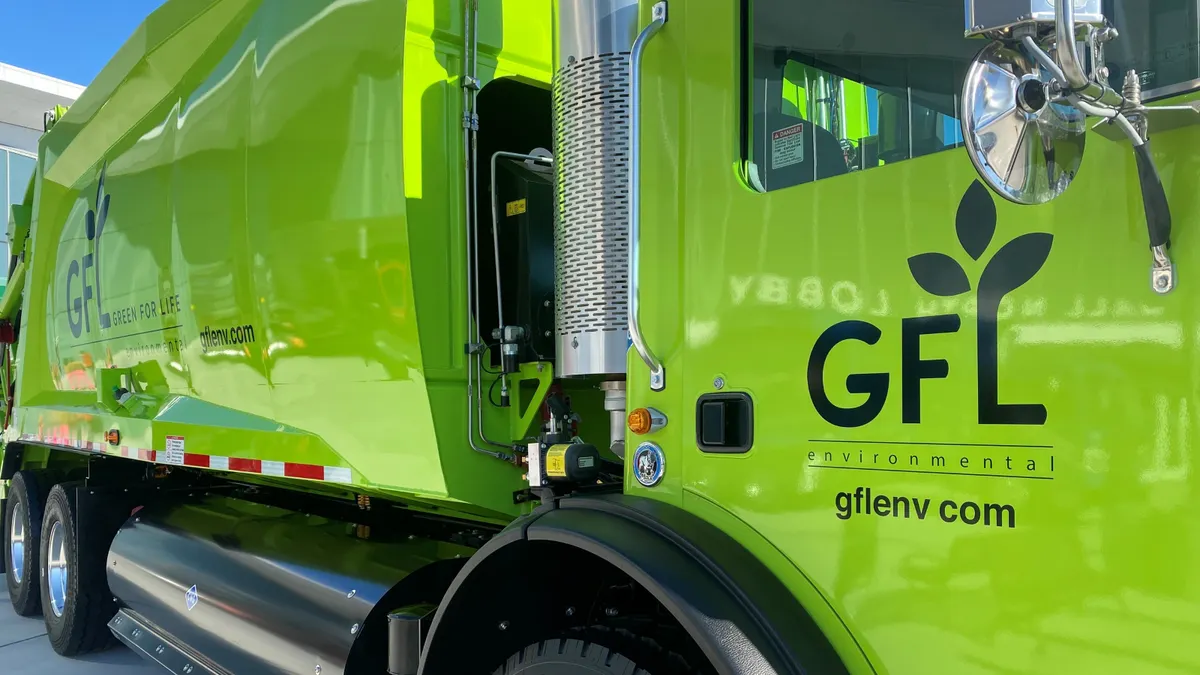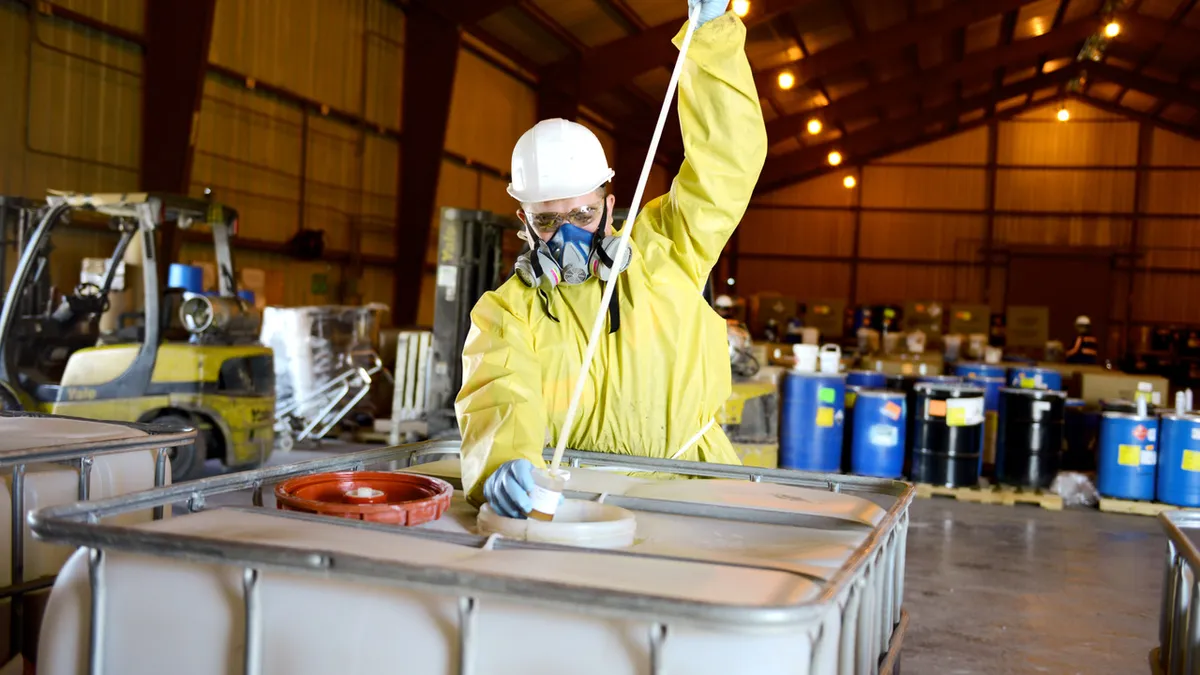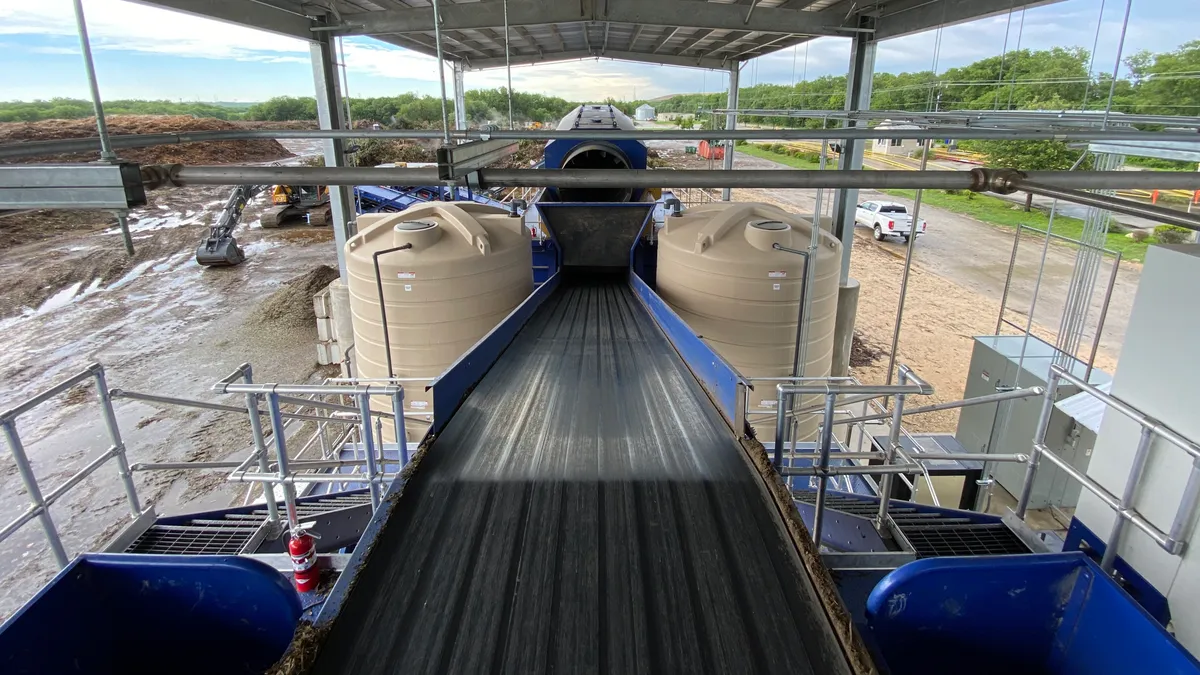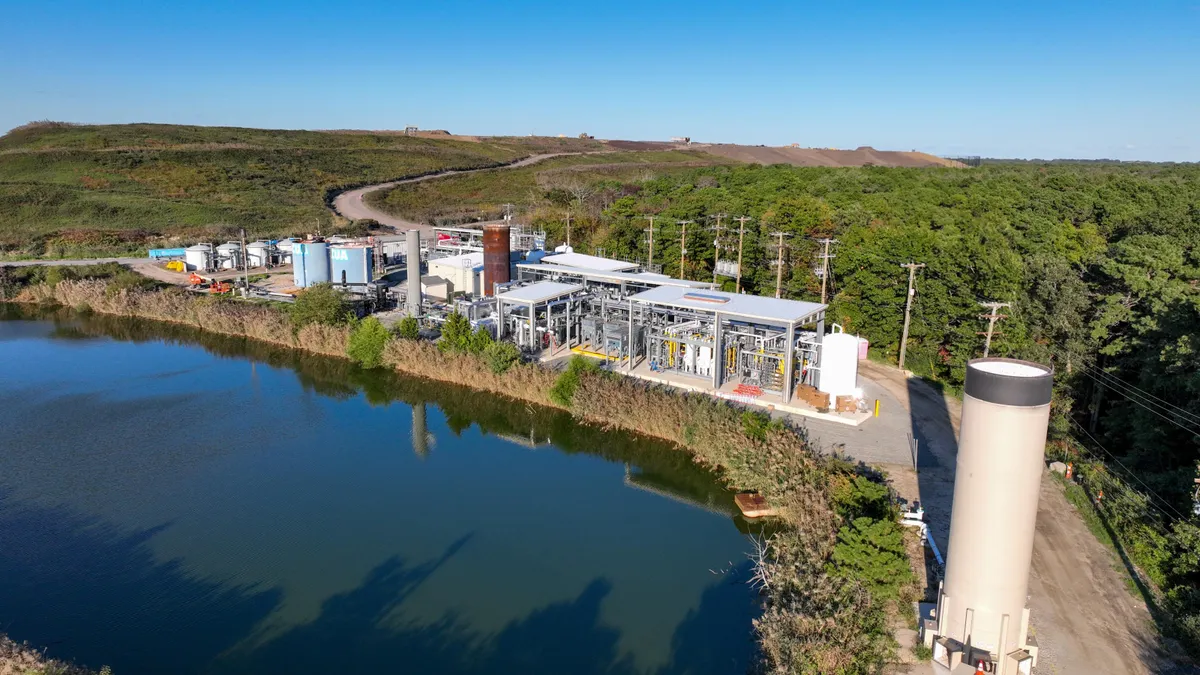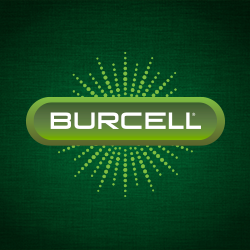After a decade of intense debate, the first year of New York City’s new commercial waste zone system has proceeded largely as planned. But behind the scenes the process has been highly complex.
The city’s Department of Sanitation is in the midst of a multiyear plan to shift from an open market system to a set of 20 nonexclusive franchise zones in an effort to improve transparency, environmental outcomes and safety. So far, nearly 25,000 customers are covered by three active zones in one area of Queens Central and all of the Bronx.
Much of this has gone as expected, with customers transitioning to new contracts, operations becoming more efficient, acquisitions sweeping the market and zone awardees investing in new equipment. Meanwhile, DSNY continues to roll out updated regulations, the city’s Business Integrity Commission is still cracking down on the market with significant fines for zone awardees and both agencies have been sued along the way.
The city’s methodical implementation timeline, which would complete the process by the end of 2027, has frustrated some. But DSNY believes its approach is the reason the city has seen a relatively smooth process so far, unlike the choppier rollout of a similar system in Los Angeles that transitioned the entire city at once in 2017.
“Our approach is working,” said Acting DSNY Commissioner Javier Lojan in an October interview. “I know there's a lot of controversy and pushback on the timing of the rollout, but if we would have rolled out everything at once I think that wouldn't have been the case.”
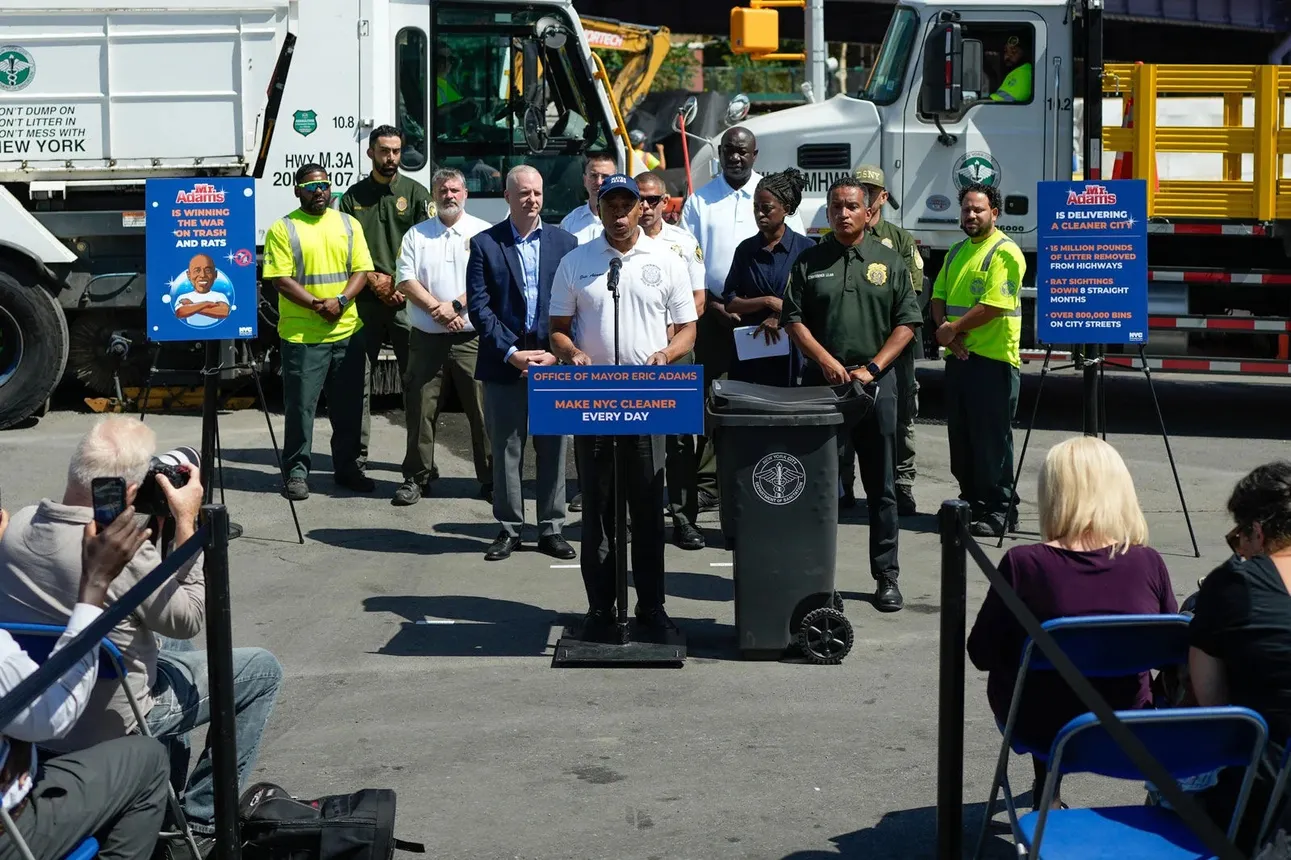
Implementation lessons
Lojan took on his role in late 2024 as the first zone, Queens Central, was getting implemented. He said the agency learned that having four months to roll it out “wasn’t productive” because in some cases customers were delaying signing contracts with new carters until the last minute. The Bronx zones, which launched in October, have a two-month transition timeline.
The agency also refined its approach to proactive enforcement, both with customers and carters, before starting in the Bronx. Lojan said carter violations dropped by around 50% in the initial months of Queens Central as they adapted to the program. DSNY issued a total of 73 violations to carters in that zone from January through June.
Carters reported some initial confusion with the city identifying customers that hadn’t previously received commercial service, for example someone who gives music lessons out of their apartment or runs a small office in a residential building, but the process has largely been resolved and operations are proceeding smoothly.
"Competition has died down tremendously,” said Tom Toscano, CEO of zone awardee Boro-Wide. "Just about everybody's under contract.”
Toscano said the process led to an increase in market share for his company, which now has an estimated 64% of the Queens Central zone, as well as a notable decline in operating costs. "The density really does work,” he said.
Waste Connections, another awardee in Queens Central as well as both Bronx zones, has also reported a positive start to the program during prior earnings calls. Basin Haulage, the zone’s third awardee, did not respond to requests for comment.
Interstate Waste Services subsidiary Action Environmental Services, an awardee in both Bronx zones, has also reported a relatively smooth transition so far.
But there’s one aspect of the city’s rollout that the carters are not pleased by.
Earlier this year, DSNY finalized a requirement that all carters conduct a waste survey for customers when they choose to use a flat billing system, which is a common method for local customers, to gather more precise data on waste generation. Representatives from Action, Boro-Wide and Waste Connections testified in opposition, noting these requirements would have changed their pricing approaches when bidding on contracts. Waste Connections estimated the extra staffing and administration required to do these surveys could cost $2,575 per customer.
DSNY said it addressed certain concerns by extending the time period in which surveys must be conducted and reducing the frequency of surveys, but the carters weren’t satisfied.
In August, the National Waste & Recycling Association filed a state lawsuit on behalf of and alongside multiple zone awardees that challenged DSNY’s rule. The suit stated similar concerns from the public comments and extrapolated Waste Connections’ cost estimates to be over $33 million per zone. It’s currently scheduled for a hearing on Dec. 19.
Lojan said he couldn’t comment on the suit specifically, but said the rule’s intent was “accuracy and transparency” and “protecting the customer.” At the time, he didn’t expect it to affect implementation of future zones.
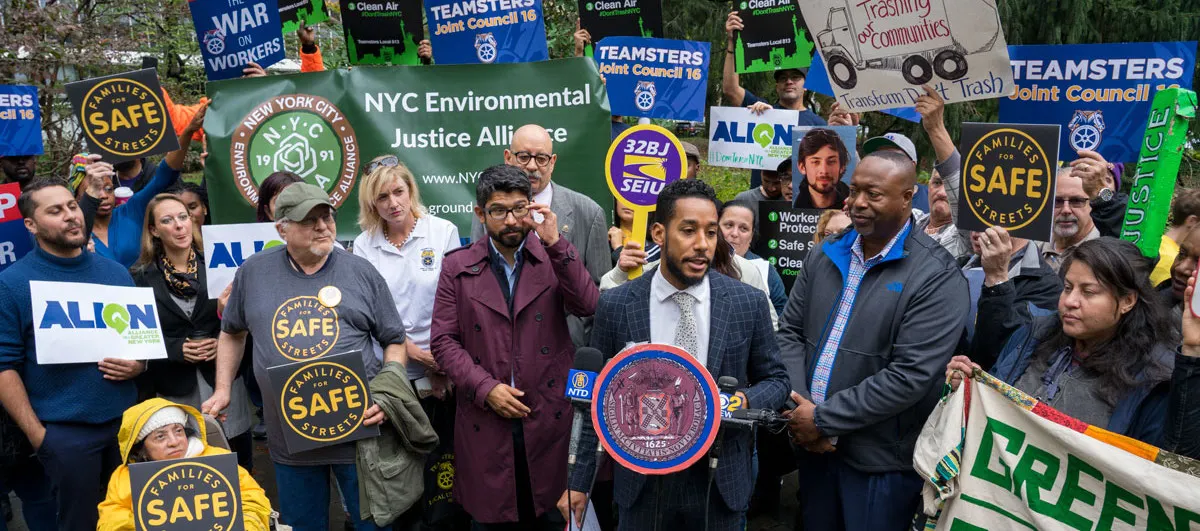
Safety and transparency
Beyond the business moves, proponents are also watching closely to see if the zone system can achieve the reforms they’d hoped for in labor standards, pricing transparency and other issues.
Teamsters Local 813, one of the original backers of the Transform Don’t Trash coalition that pushed for the waste zone law, has seen the move as a positive so far.
"It certainly seems that the standards have risen, training seems to be much more stringent,” said President Daniel Wright, whose union represents employees at certain locations of Action, Waste Connections and Cogent Waste Solutions.
Josh Carrero, business manager of Laborers Local 108, said all this activity has increased union membership to an estimated 1,700 members in less than two years. The union represents Action and Waste Connections members in certain locations, as well as those at Filco Carting and other companies.
"This franchising really did some good things,” he said, in terms of safety training and investments, noting that Action in particular “has enormously improved their safety.”
While both unions feel the implementation has been too slow, they’re largely happy with the outcome so far. DSNY estimates that over 1,300 private company employees received safety training during the 2025 fiscal year, which ended June 30, including awardees in Queens Central and those with citywide containerized waste contracts.
Reformers had also hoped to see changes involving unions themselves, but instead got mixed results.
In 2019, then-Council Member Antonio Reynoso, the lead sponsor of the commercial waste zone law, passed a bill with backing from the BIC to require trade waste unions to register with the agency. This came amid a period of intense scrutiny on the sector, including over issues at the now-closed Sanitation Salvage, which had poor safety conditions and what was considered an employer-friendly union.
The goal of the Teamsters-backed bill, said Wright, was that "if you were not approved you did not have the authority or the ability to represent workers in the industry.”
United Service Workers Local 339 sued the city over this law in 2021, arguing that federal labor law superseded these local regulation attempts. While the suit was ultimately dismissed, the challenge led to a delay in the BIC’s review process, a change in how the local law could be enforced and a 2023 settlement that covered $410,000 in legal fees for the union.
The BIC confirmed, via a public records request, that it has now registered four trade waste unions and one is pending.
This includes a successor union to USW Local 339, which now goes by United Waste and Recycling Workers Local 393. Jose Vega, president of Local 393, did not respond to a request for comment.
Wright and Carrero said they completed the registration processes for their respective unions this year, but beyond that paperwork this status hasn’t come up with any companies or other agencies such as DSNY.
Reynoso, now borough president of Brooklyn, did not respond to a request for comment about the law’s outcome as of publication.
Labor and safety issues were also flagged in a recent report by Comptroller Brad Lander, which questioned DSNY’s zone award selection process and noted violation amounts for multiple awardees.
This included Cogent, which received a notice of violation from the BIC that included nearly 5,000 counts in late 2023. Alleged violations included falsifying business records, overcharging customers and other issues. DSNY also chose to appoint an independent monitor at Cogent, as well as its related company New York Recycling Solutions.
The comptroller’s report questioned DSNY’s selection of Cogent for certain zones, but the agency decided these violations issues were not disqualifying and deemed that it had capacity to provide sufficient service.
The report notes that Cogent’s $500,000 initial fine settlement with BIC in 2023 was the “highest-ever recorded” given the scope of the investigation, versus the agency’s standard violations that tend to be in the thousands or tens of thousands of dollars for more isolated incidents. But a public records request indicates there was more to it.
BIC ultimately chose to withdraw the majority of these violations as part of a settlement in which Cogent agreed to pay for 86 of them. Cogent ultimately agreed to pay $1.3 million, including $100,000 up front and ongoing installments from September 2024 through April 2026. The settlement also notes any sale of the company will not be approved until the fines are paid.
That same records request also revealed that BIC recently fined Action for multiple issues it noticed while reviewing sample contracts for the company’s standard license renewal. This included outdated or missing information, including a lack of information about maximum rates in some cases. The parties reached a settlement in September that required Action to pay $825,000 in fines.
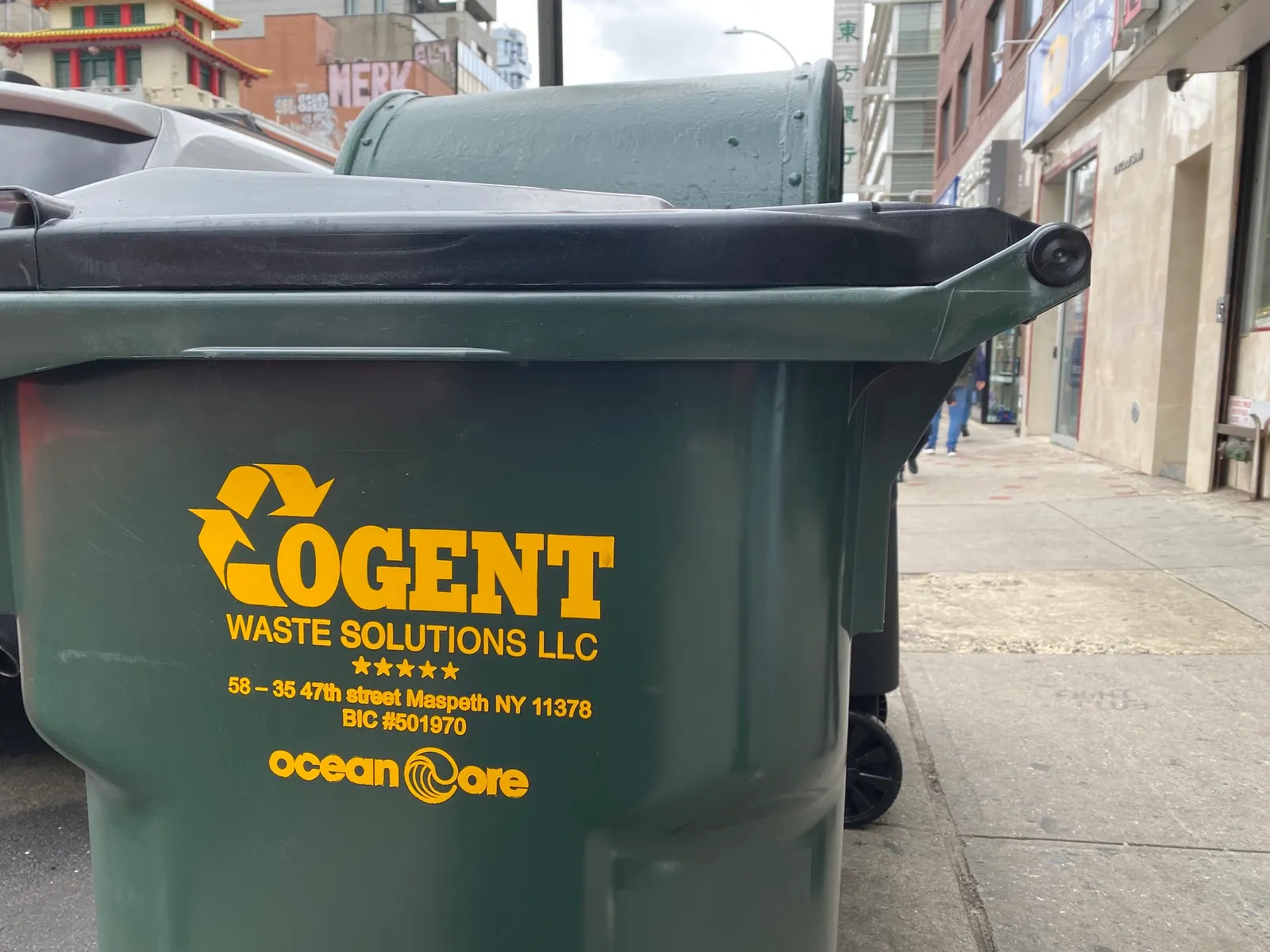
Pricing and bids
Pricing, long considered opaque in the sector, was also flagged as an area of concern in the comptroller’s report as bids from awardees varied widely. This was the most heavily weighted factor in DSNY’s selection process.
David Biderman, a safety consultant that works with multiple awardees, described the pricing information in the report as “eye opening” given the range of “different pricing methodologies that various awardees are using in New York City.”
The report laid out sample pricing from bidders, showing in some cases the highest bids were anywhere from 43% to 145% above the lowest bids in each zone. This led some sources to speculate that certain bids were made in error or were too low to be viable.
"Are they going to allow them to change their pricing? What does that do for everybody else?” questioned Greg Lettieri, CEO of zone awardee RTS, suggesting that some companies could go out of business if not.
DSNY, in an official response included within the comptroller’s report, said pricing depended on a range of factors that mean “no two awardees will offer the same exact price.”
Lojan said in an interview that DSNY took operational capacity into account when reviewing bids.
“That is something that we would have been looking for is that we didn't want any low bidders coming in where they couldn't support an operation and then we would be obviously in a tough position,” he said.
Meanwhile, there were cases where pricing and other factors led to certain carters getting ranked highly in a zone but not receiving that zone in the end.
For example, Toscano said he really “sharpened my pencil on pricing” in Brooklyn West because the company already had work there. While it ranked second under its previous operating name, Mr. T Carting, the company wasn’t awarded a contract because the city deemed it didn’t have capacity to handle it. Meanwhile, they gave him Manhattan Northeast "which I have almost no work in and I was lower on the list of awardees.”
Justin Wood, director of policy at New York Lawyers for the Public Interest, said while the comptroller’s report didn’t necessarily break new ground it “affirmed our thinking that these issues of nontransparency, arbitrary pricing, the danger, lack of consistent worker safety training, all of this is sort of endemic to the current system.”
Wood said the report’s finding reaffirmed advocates’ desire to see “rigorous enforcement,” including the potential to assess liquidated damages against awardees or rebid zones if needed, as well as a quicker rollout.
"The only way to have all of that matter is to implement the 20 zones citywide as soon as possible. We think the end of 2026 is a reasonable time frame,” he said.
Multiple awardees have said the current timeline works fine for them and gives time to prepare before each expansion.

Looking ahead
As this program continues to roll out for two more years, participants and observers still have many questions about how the process will go.
Yet another factor is a change in mayoral administrations. Mayor Bill de Blasio signed the commercial waste zone law and launched the RFP process. Mayor Eric Adams oversaw contact awards and initial implementation. Now it will fall to Mayor-elect Zohran Mamdani to finish the job.
“This is one of the priorities for me and the current administration, and it’s local law so I'm sure it's going to be a priority for a future administration,” said Lojan in October. “And we're just going to continue to mitigate any issues and work with the carters and the customers to protect both.”
Sources don’t currently anticipate Mamdani will make notable changes that affect the program’s timing, aside from the expected naming of an official DSNY commissioner, since it’s already well underway. Notably, Mamdani’s transition committee for transportation, climate and infrastructure includes members of the Transform Don’t Trash Coalition that would like to see the rollout go faster. This includes Wood from New York Lawyers for the Public Interest as well as Eddie Bautistia, executive director of the NYC Environmental Justice Alliance.
Reynoso’s office said it was too soon to know what the Mamdani administration could mean for the program. Council Member Shaun Abreu, who currently chairs the council’s sanitation committee, didn’t respond prior to publication.
In the meantime, DSNY must still work through transitions in the two Bronx zones by the end of this month. The Bronx Chamber of Commerce has raised concerns about whether a quicker implementation window than Queens Central is working.
“The expedited timeline has led to confusion, service gaps, and mounting frustration for business owners already navigating rising operating costs and economic pressures,” said President Lisa Sorin in an emailed statement, noting the carters are also facing “logistical challenges” in the process. “It may be necessary for the city and the Department of Sanitation to extend the compliance window and enhance outreach efforts in partnership with local business organizations to ensure a smooth transition.”
DSNY, when asked to respond, indicated it’s sticking with the transition plan. Press Secretary Vincent Gragnani said via email that the two-month approach is “based on experience and data from Phase 1, where businesses had a four-month transition window, and the majority of sign-ups occurred in the final two months of that period.”
Speaking in October, Lojan said the agency was taking a measured approach, not assuming each zone transition would be the same and would be ready to adapt to each area as needed.
The next zones to launch will be Queens Northeast and Brooklyn South on Jan. 1, followed by Queens West and Lower Manhattan on April 1. DSNY currently envisions a two-month implementation period in each area.
While DSNY is continuously working to improve its customer data and prepare for the next zones, the experience in the initial three is expected to continue with new customers potentially getting discovered and some amount of accounts getting assigned to carters automatically.
“This gap highlights a vital lesson: businesses must have clear, proactive channels available to them to understand what’s happening and report their needs early to the appropriate stakeholders,” said Adam Pasquale, a newly licensed waste broker at the company Locol Waste via email.
Pasquale, who’s previously worked for multiple zone awardees, said carters should be prepared for these key periods as they aim to lock in initial market share. This is considered especially important for smaller companies that are trying to compete.
“Haulers must have the appropriate resources deployed to each zone to be able to absorb the magnitude of work that’s up for grabs during each transition period. The big players like Action Environmental and Waste Connections bring unmatched resources, but their focus on retaining and acquiring core accounts will inevitably create openings.”
In yet another wrinkle to the process, the five companies that won citywide containerized contracts — Action, Waste Connections, Filco, Boro-Wide and RTS — can begin signing up customers in each zone as they come online. These were designed to give large customers with multiple locations the ability to keep working with one hauler, but so far there hasn’t been much action on them in the initial zones.
Toscano said that long-term he doesn’t think the separate containerized contract “is all it was cracked up to be.” Josh Haraf, IWS’ vice president of the New York City market, said some of this has started to come up in the Bronx, but overall he doesn’t think it will be a huge effect because many larger customers are already handled by a citywide awardee.
If nothing else it has shown the continued prevalence of smaller haulers who didn’t win contracts and how they’ll keep competing until the bitter end.
"I never cease to be amazed by other haulers that are operating in the space that you don't necessarily see until you get a phone call,” Haraf said.


